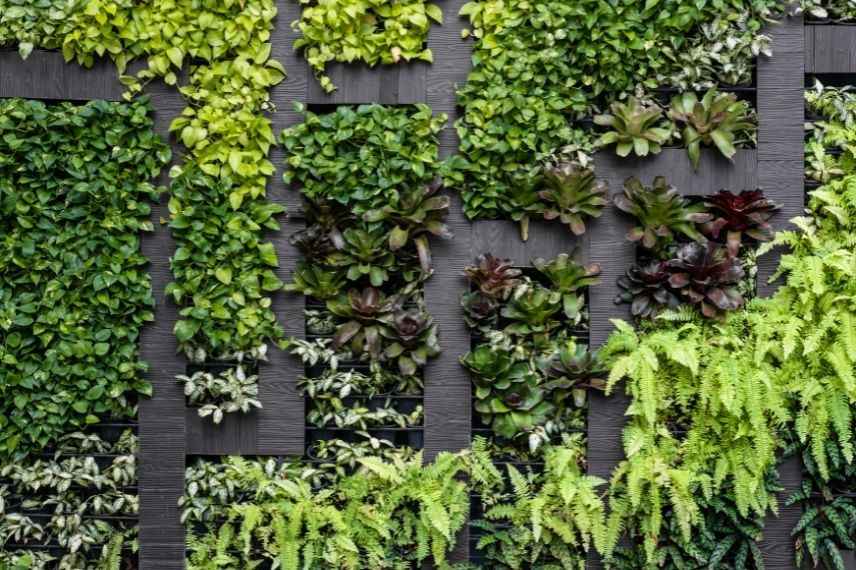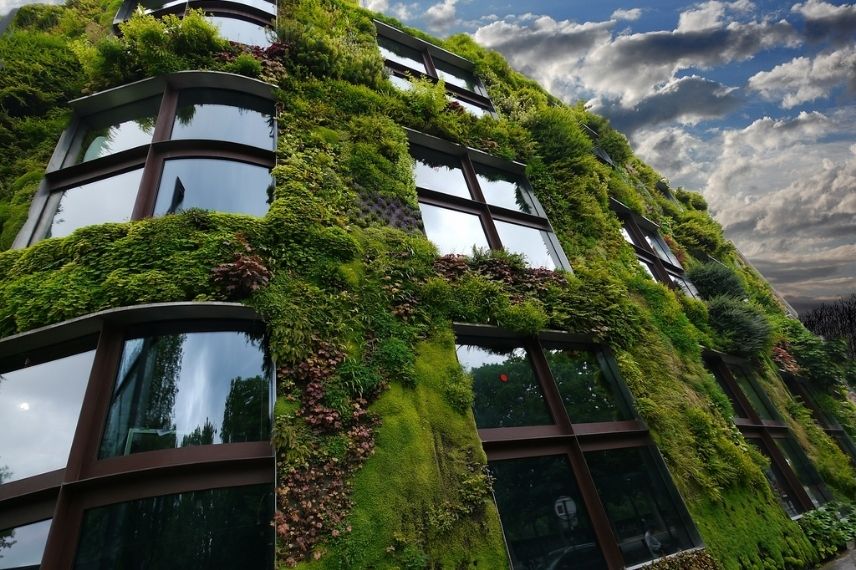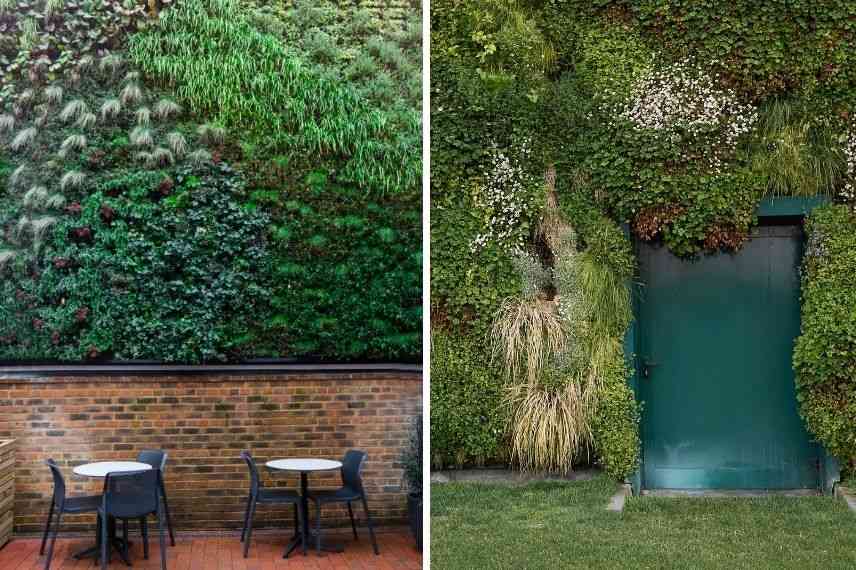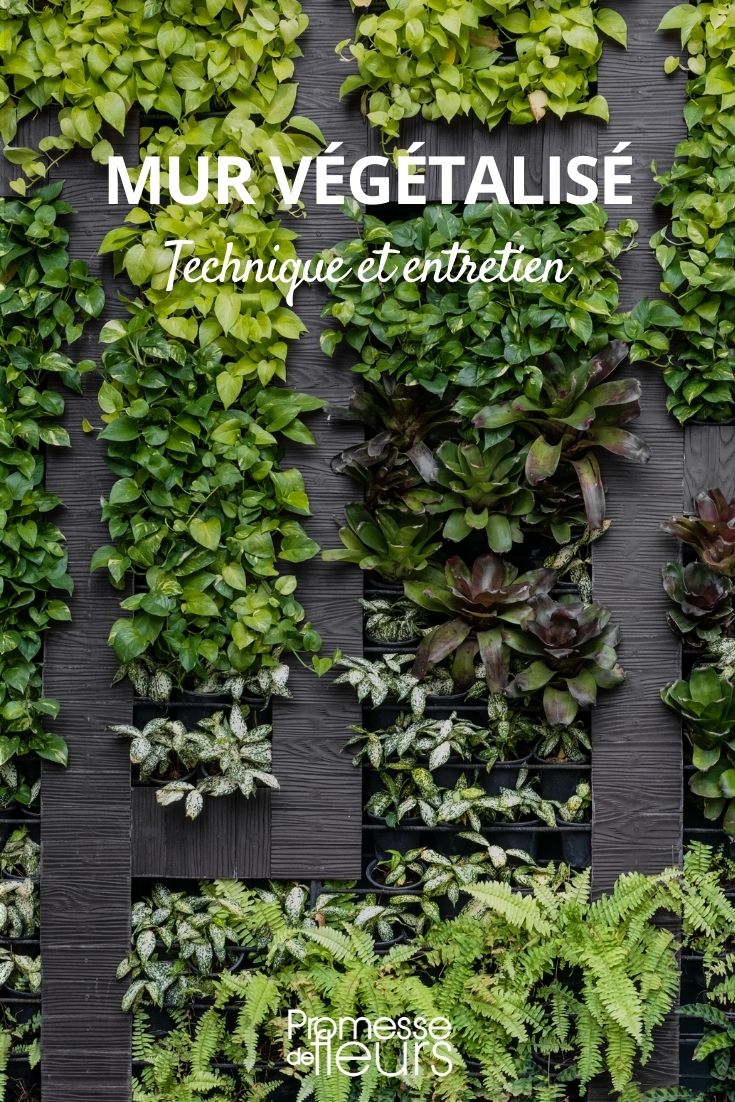
How to create an outdoor living wall?
Choosing plants, techniques, and maintenance
Contents
A true vertical garden, the green wall is a contemplative element that inspires serenity. Over the seasons, weeks, and even days, it continually evolves for your visual pleasure. But beyond this purely aesthetic aspect, it can also play a significant ecological role – through better thermal regulation of the building, protection of walls against pollution, and a life-saving noise reduction function…
Beyond professional methods, the inventor of green walls, Patrick Blanc, has developed a manufacturing technique accessible to all individuals. You will need to choose the right plants for this type of installation: from traditional climbing plants with or without flowering (ivy, hops, wisteria, clematis…) to the edible green wall, featuring fruit-bearing climbing plants (grapevine, kiwi, akebia…).
A permanent installation, the lifespan of a plant wall is, on average, 10 years, if and only if the conditions for its development are well met (exposure, watering, pruning). In this advice sheet, we explain how to create a natural green wall, not an artificial one.
Good to know: creating a green or flowering wall requires the permission of the wall owner (be cautious with party walls), and it is also subject to regulations: apart from greening a grid or a fence wall, it requires prior declaration to the local council.
What technique to create a green wall?
Before the intervention of French botanist and CNRS researcher Patrick Blanc, the walls of homes could be covered with climbing plants, such as ivy, wisteria, or honeysuckle. Under his influence, these green facades transformed into living walls, based on the principle of hydroponic cultivation. Here, plants thrive either in hydroponics, using only light and water, or with a bit of substrate.
Patrick Blanc’s work led him to refine a technique: it relies on a neutral substrate (coconut fibre, rock wool, felt) to avoid damaging the walls, which is fixed onto a wooden panel adjusted to a metal frame located a few centimetres from the wall. The best illustration of his work remains the 1000 m² living wall at the Quai Branly Museum in Paris, completed in 2004.
Naturally, this living tableau must be properly irrigated and nourished to develop: it is essential to provide a system to allow the runoff of water and nutrient solution, while knowing that the substrate will absorb part of it.

Which plants to choose to decorate your outdoor space?
The greening of a wall is primarily motivated by aesthetic reasons – whether to add a splash of colour and life or to conceal a dull and damaged wall. The choice of plants depends, of course, on several factors: exposure (to shade or sunlight), the flowering period, and their ability to grow in minimal substrate.
You can opt for perennial plants that will return year after year – while ensuring you respect their growing conditions (exposure as well as increased sensitivity to cold and wind on a green wall). In this planting sphere, you have ground covers with a small root system: creeping Dichondra, Indian mint, small ferns (Asplenium ceterach and trichomanes), Rome’s Ruin, sagina, saxifrages, and houseleeks… or even low-growing plants with decorative foliage to play with colours (carex, dwarf hostas, heucheras, fescues, Echeveria…).

Green wall
How to create a natural green wall?
Without the intervention of a professional, designing an outdoor vertical garden is not entirely hydroponic, as it cannot completely exclude soil. However, it is possible to create a vertical garden at a lower cost.
To build the support necessary for the development of the vertical garden, you will need:
- batten strips;
- Douglas fir boards;
- horticultural felt;
- a staple gun.
Once you have this equipment, you should proceed step by step:
- Create a frame with the pine boards;
- Attach the batten strips to the side edges of the boards to create an empty space between the frame and the wall;
- Staple the horticultural felt over the entire surface;
- Prepare a second layer of horticultural felt and create the planting pockets by making slits and securing them with staples;
- Fix the whole assembly to the wall.
After constructing the support, all that remains is to fill it with potting soil and your plants, flowers, and greenery.
Read also
Virgin vine: planting, care, pruningHow to care for and water it?
Pruning and maintenance
An outdoor green wall requires some care. Indeed, it is essential to pay attention to its watering, pruning, and to observe a few daily tasks such as simply removing faded flowers and damaged parts of the plants.
Good to know: even though a well-maintained green wall has a lifespan of about ten years, 10 to 20% of its plants need to be replaced each year. Furthermore, it is advisable to keep patches of spontaneous vegetation to facilitate the greening of the space – whether it be moss or ferns…
Watering a green wall
Watering a green wall can be done simply by hand – which allows for meticulous attention to the water supply of each plant that makes it up. However, it can also rely on a more or less complex system, ranging from an old perforated hose placed at the top of the green wall to create a “rain” effect to a more advanced irrigation circuit.
In the latter case, the system consists of a reservoir associated with a pump, installed at the base of the green wall (or behind it) and a network of interconnected tubes, equipped with drippers to water the plants. It is important to arrange for it to be installed behind the wall or next to it, camouflaged by a bush, for example. To enhance this setup, it is entirely possible to use a rainwater collector and a timer to automate the watering of the green wall.

- Subscribe!
- Contents
































Comments